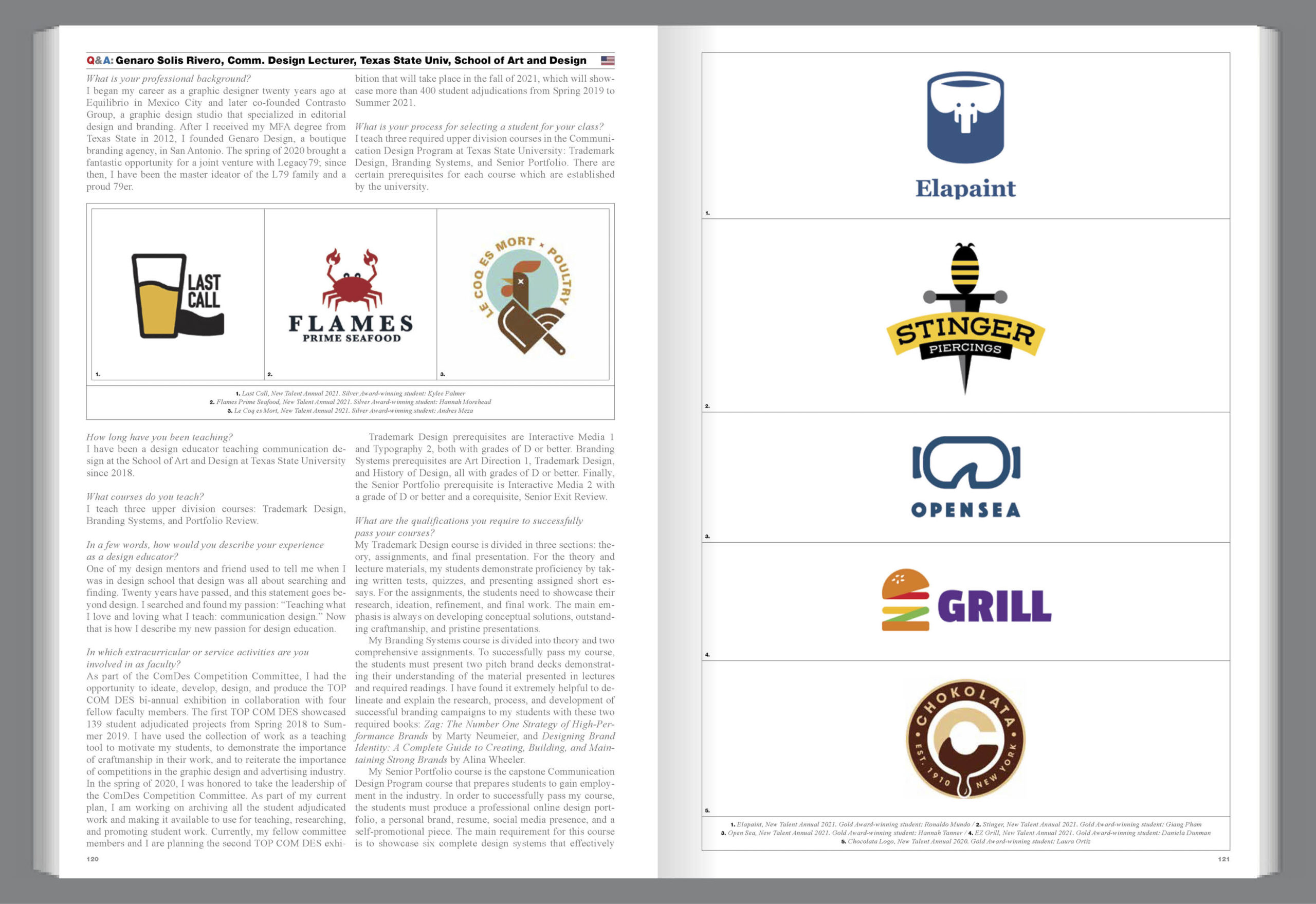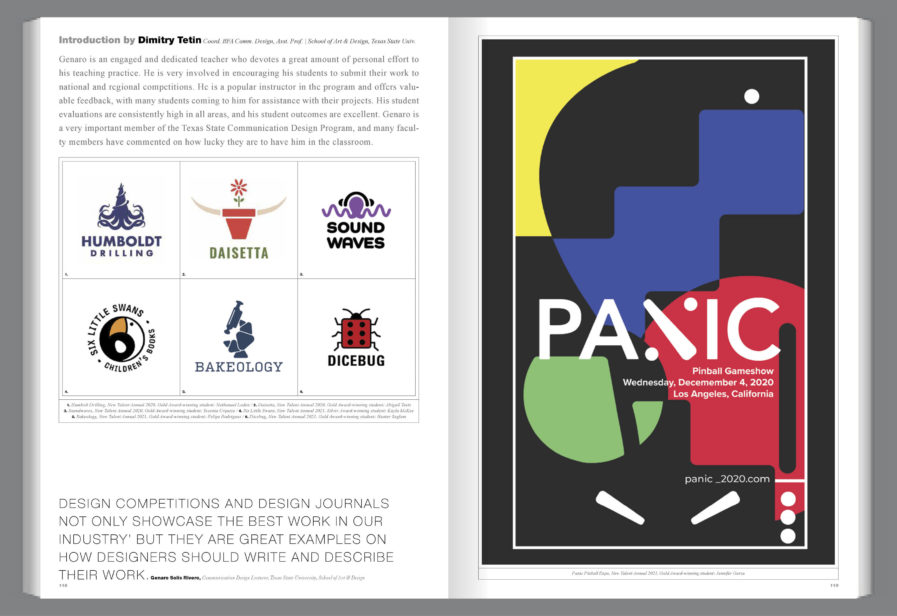Renowned teacher and graphic designer Genaro Solis Rivero is featured in our upcoming Graphis Journal #371 (available for preorder), where he offers us pearls of wisdom from everything to his teaching methods to his design practice.
Originally from Mexico, Rivero began his graphic design career twenty years ago at Equilibrio in Mexico City. He’s since then become an award-winning designer, and more recently assumed the role of a lecturer and educator at the School of Art and Design at Texas State University. Alongside his current teaching career, Rivero is also part of the creative leadership team at branding agency Legacy79. His personal motto, “Teaching what I love and loving what I teach,” has guided his illustrious career so far and is definitely a lesson we can all take inspiration from.
Dimitry Tetin, an assistant professor and coordinator at the School of Art and Design, describes Rivero as “an engaged and dedicated teacher who devotes a great amount of personal effort to his teaching practice.” He continues that “his student evaluations are consistently high in all areas, and his student outcomes are excellent.” Student Abigail Teets confirms that, saying Rivero’s classroom “is a place of honesty and encouragement. He demands the best from every student because he sees the potential in every student.”






